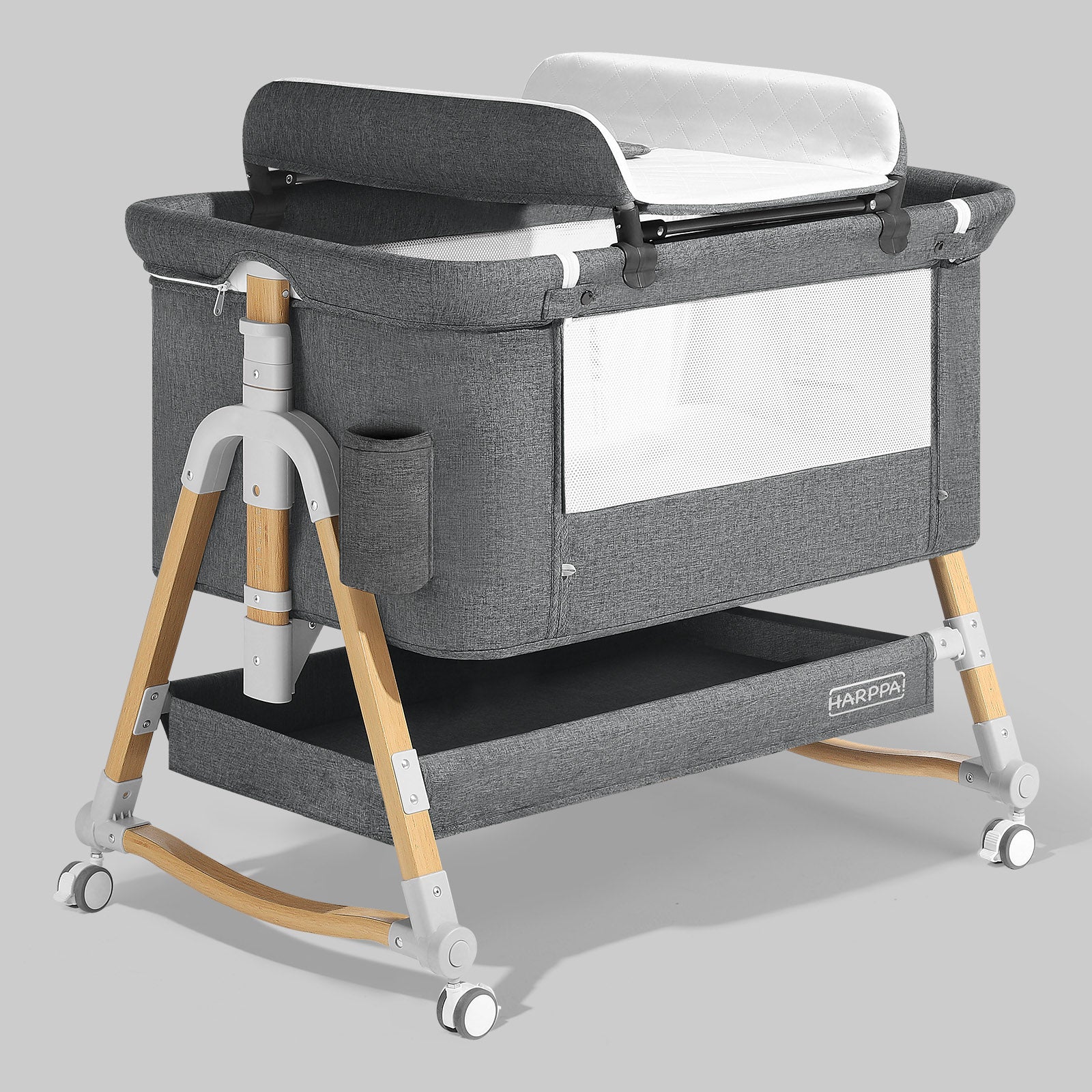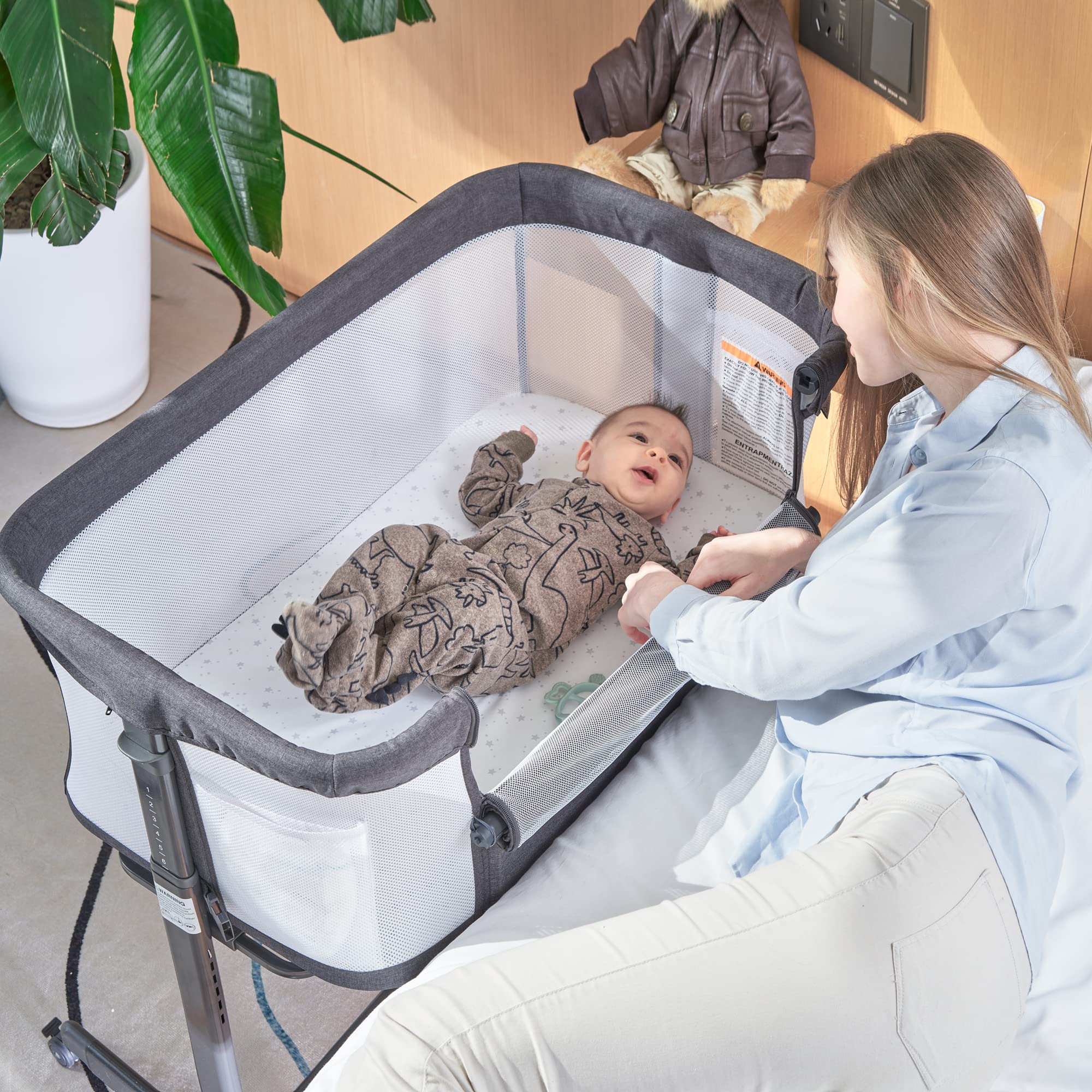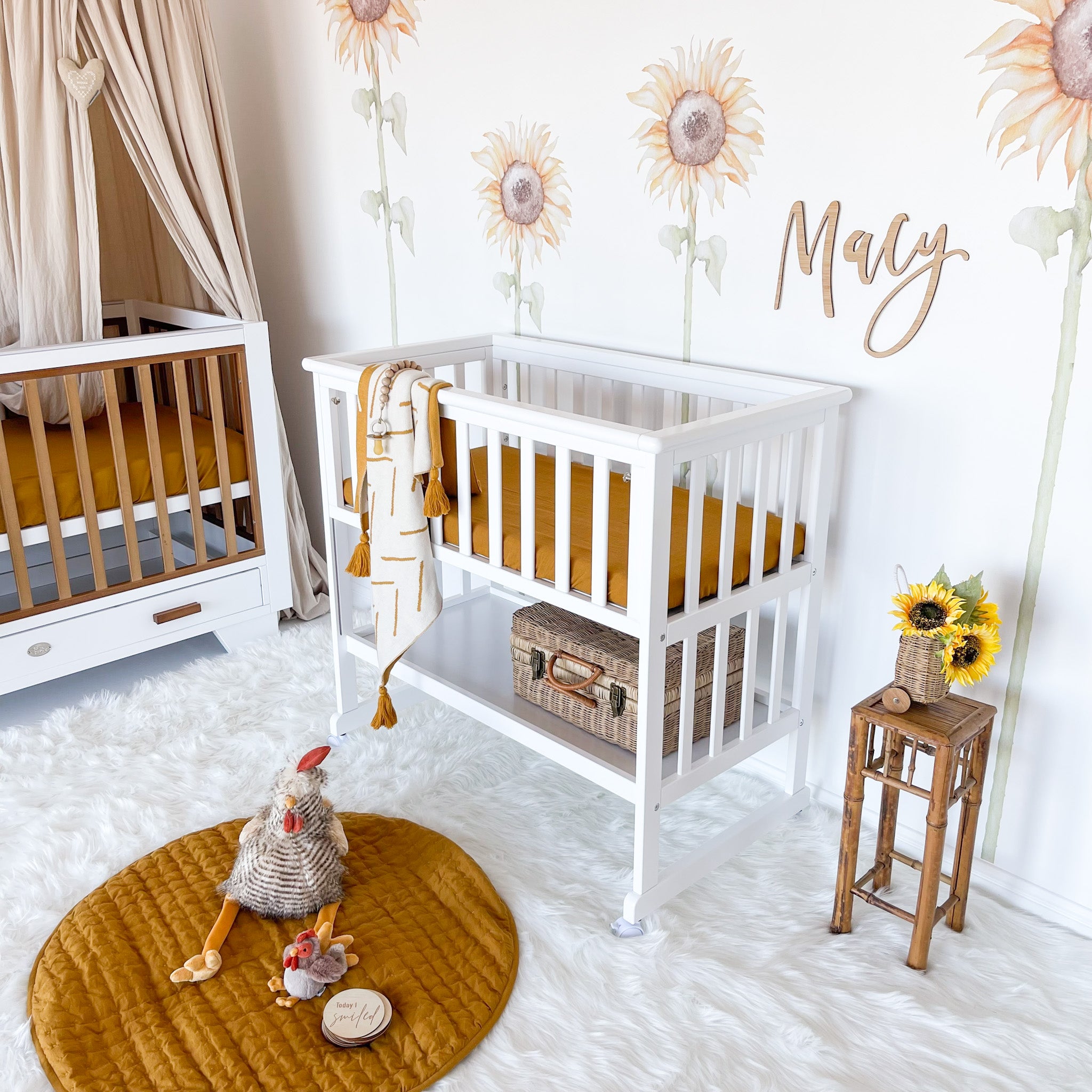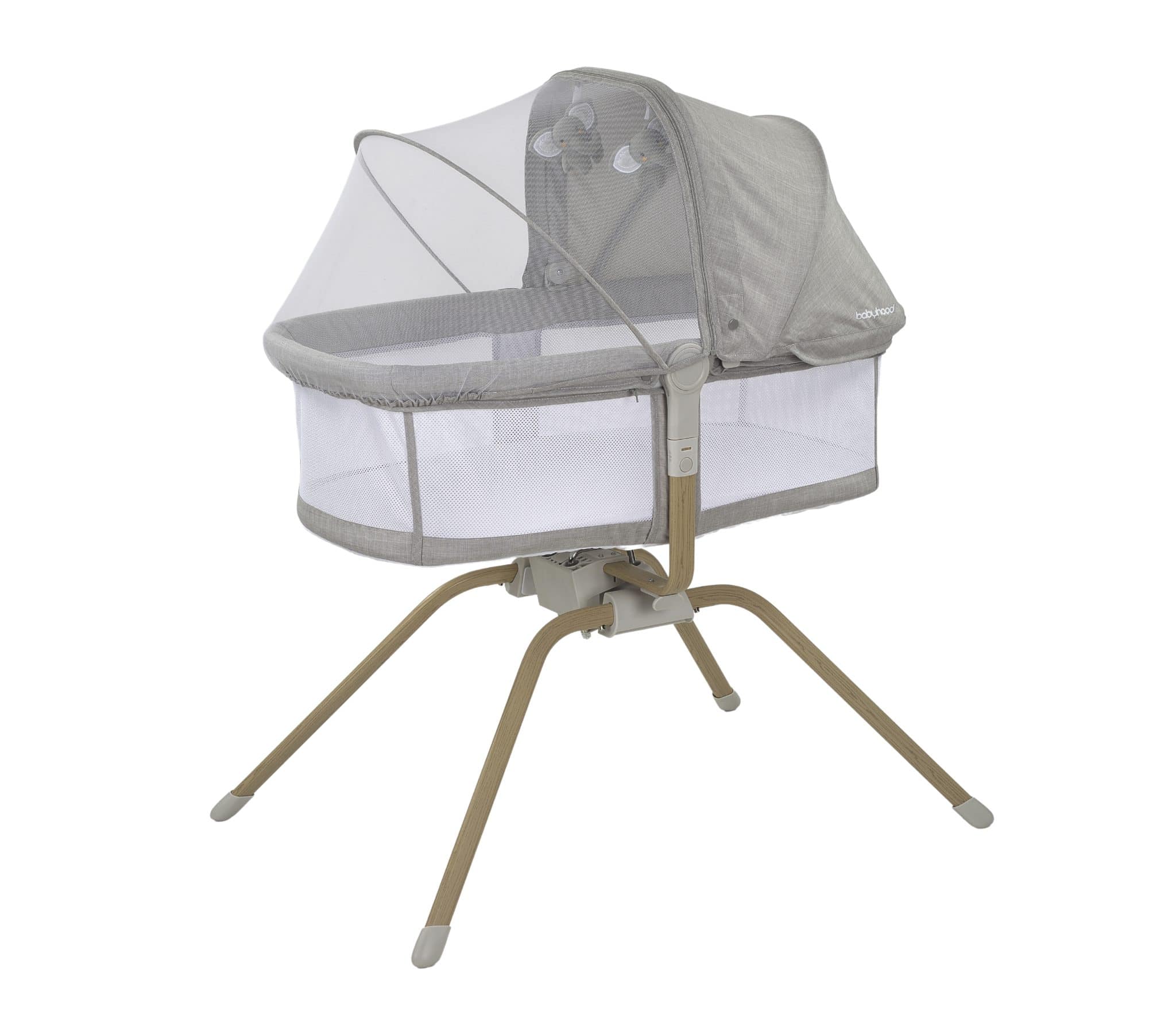Welcoming a new addition to the family is a joyous occasion, filled with excitement and anticipation. As parents, we strive to provide the best care and comfort for our little ones, ensuring their safety and well-being every step of the way. One significant milestone in the journey of parenthood is the transition from bassinet to crib—a decision that prompts reflection, consideration, and sometimes, a touch of apprehension. In this comprehensive guide, we explore the factors to consider when making this transition, offering guidance and reassurance to parents navigating this important stage of their baby’s development.

Understanding the Purpose of a Bassinet: A Safe and Cozy Nest
Bassinets serve as a safe and snug sleeping space for newborns during their first few months of life. Designed for convenience and proximity, bassinets offer easy access to the baby for feeding, comforting, and monitoring throughout the night. Their compact size and portability make them ideal for placement beside the parent’s bed, facilitating nighttime caregiving without the need for long-distance trips to the nursery. Additionally, the cozy confines of a bassinet provide a sense of security and containment for newborns, mimicking the snug environment of the womb and promoting restful sleep.
Signs That Your Baby Is Ready for the Crib: Observing Developmental Cues
While bassinets offer a nurturing environment for newborns, there comes a time when babies outgrow their snug sleeping quarters and are ready to transition to a crib. Several developmental cues can indicate that your baby is ready for this transition. For example, if your baby has started rolling over independently or showing signs of increased mobility, such as pushing up on their hands and knees, it may be time to consider moving them to a crib with ample space for movement. Additionally, if your baby is consistently waking up throughout the night and seems cramped or uncomfortable in the bassinet, this may also signal a readiness for the transition to a larger sleeping space.
Safety Considerations: Ensuring a Secure Sleep Environment
Safety is paramount when transitioning your baby from a bassinet to a crib. Before making the switch, take the time to evaluate the safety features of your chosen crib, ensuring that it meets current safety standards and guidelines. Look for cribs with sturdy construction, properly spaced slats, and adjustable mattress heights to accommodate your growing baby. Additionally, remove any soft bedding, toys, or pillows from the crib to reduce the risk of suffocation or Sudden Infant Death Syndrome (SIDS). Position the crib away from windows, cords, and other potential hazards, and use a firm mattress with a fitted sheet to create a safe and secure sleep environment for your baby.

Creating a Smooth Transition: Tips for Success
Transitioning your baby from a bassinet to a crib can be a gradual process, allowing both you and your little one time to adjust to the change. Start by incorporating the crib into your baby’s daytime routine, encouraging supervised play and exploration in the crib during awake periods. Gradually increase the amount of time your baby spends in the crib, starting with short naps and eventually transitioning to overnight sleep. Use familiar bedding or sleep cues, such as a favorite blanket or stuffed animal, to help ease the transition and create a sense of continuity between the bassinet and crib. Be patient and consistent with your approach, offering comfort and reassurance to your baby as they acclimate to their new sleeping environment.
Monitoring Your Baby’s Adjustment: Recognizing Signs of Comfort
As your baby settles into their new crib, pay close attention to their behavior and sleep patterns to gauge their comfort and adjustment. Look for signs of contentment, such as longer stretches of uninterrupted sleep, relaxed body language, and easy resettling after waking. Conversely, be alert to signs of discomfort or distress, such as increased fussiness, frequent waking, or difficulty settling down to sleep. Adjust your approach as needed to address any challenges or concerns, offering additional comfort and support to help your baby feel secure and at ease in their new sleeping space.

Choosing the Right Timing: Factors to Consider
Determining the optimal time to transition your baby from a bassinet to a crib requires thoughtful consideration of various factors. While there is no one-size-fits-all approach, certain indicators can help guide your decision-making process. For instance, if your baby consistently outgrows the weight or size limit recommended for the bassinet, it may be a clear signal that it’s time to make the transition. Additionally, if your baby is displaying signs of increased awareness and curiosity, such as reaching out for objects or showing interest in their surroundings, they may benefit from the additional space and stimulation provided by a crib. By observing your baby’s unique needs and developmental milestones, you can confidently navigate the transition to a crib with sensitivity and insight.

As parents, it’s natural to experience a range of emotions when contemplating the transition from bassinet to crib. Concerns about safety, separation anxiety, and disruptions to sleep patterns may weigh heavily on your mind, prompting feelings of apprehension and uncertainty. However, it’s essential to approach the transition with confidence and reassurance, knowing that you are equipped with the knowledge and resources to support your baby’s well-being every step of the way. Seek guidance from trusted healthcare professionals, parenting resources, and fellow parents who have navigated similar transitions, drawing strength from their wisdom and experience. Remember that you are not alone on this journey, and together, we can navigate the challenges and joys of parenthood with courage and resilience.
Embracing Milestones: Celebrating Your Baby’s Growth and Progress
Transitioning your baby from a bassinet to a crib is more than just a practical adjustment—it’s a celebration of your baby’s growth and development. Each milestone reached is a testament to their resilience and adaptability, reminding us of the incredible journey of discovery and transformation that unfolds during the early years of life. As you witness your baby explore their new sleeping space with curiosity and wonder, take a moment to reflect on the journey that has brought you to this point, cherishing the memories and milestones along the way. Embrace each new chapter with open arms, knowing that you are nurturing a strong, confident, and resilient little one who is ready to embrace the world with courage and curiosity.
Conclusion: Nurturing Your Baby’s Growth and Development
In conclusion, the transition from bassinet to crib is a significant milestone in your baby’s journey of growth and development. By understanding the purpose of a bassinet, recognizing developmental cues, prioritizing safety considerations, and implementing strategies for a smooth transition, you can ensure a seamless and comfortable experience for both you and your baby. Remember to trust your instincts as a parent, offering love, patience, and reassurance every step of the way. As you nurture your baby through this transition, cherish the moments of closeness and connection, knowing that you are providing a safe and nurturing environment for your little one to thrive.
